The Best Headphones for Film Editors
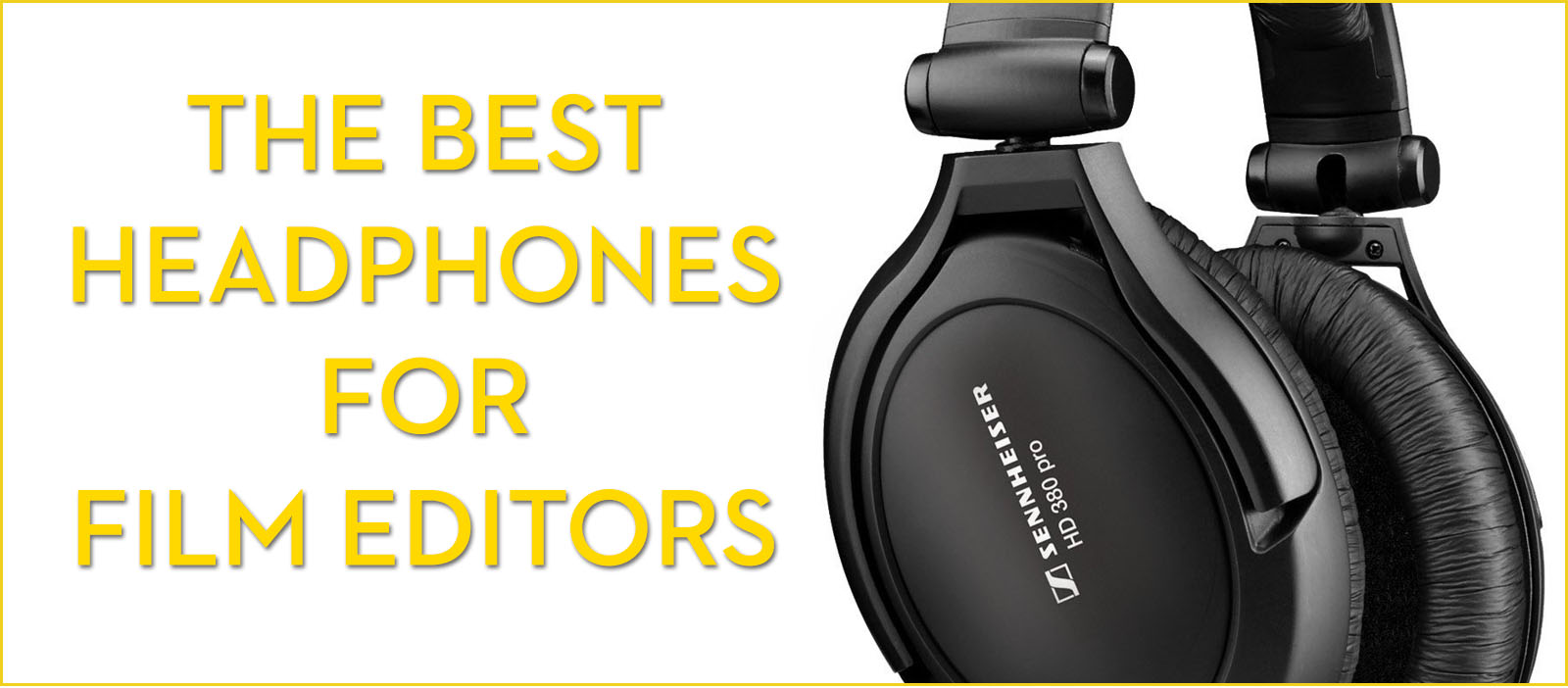
- How to pick the best headphones for film editing
- What matters most to a film editor using headphones
- Headphone reviews, suggestions, and my personal choice
Last Updated – August 2025
As a film editor I spend many hours working in client offices, on-set and other random places that make it essential to own a pair of high quality, reliable and comfortable headphones.
In this article, I’ve done the research for you and put together a simple guide to help you choose the best headphones for film editing.
We’ll start with a quick rundown of:
- the specific requirements of a film editor
- the essential technical details you need to understand
- a selection of headphone options and recommendations from myself and other professional editors, you can rely on day after day
What did I choose?
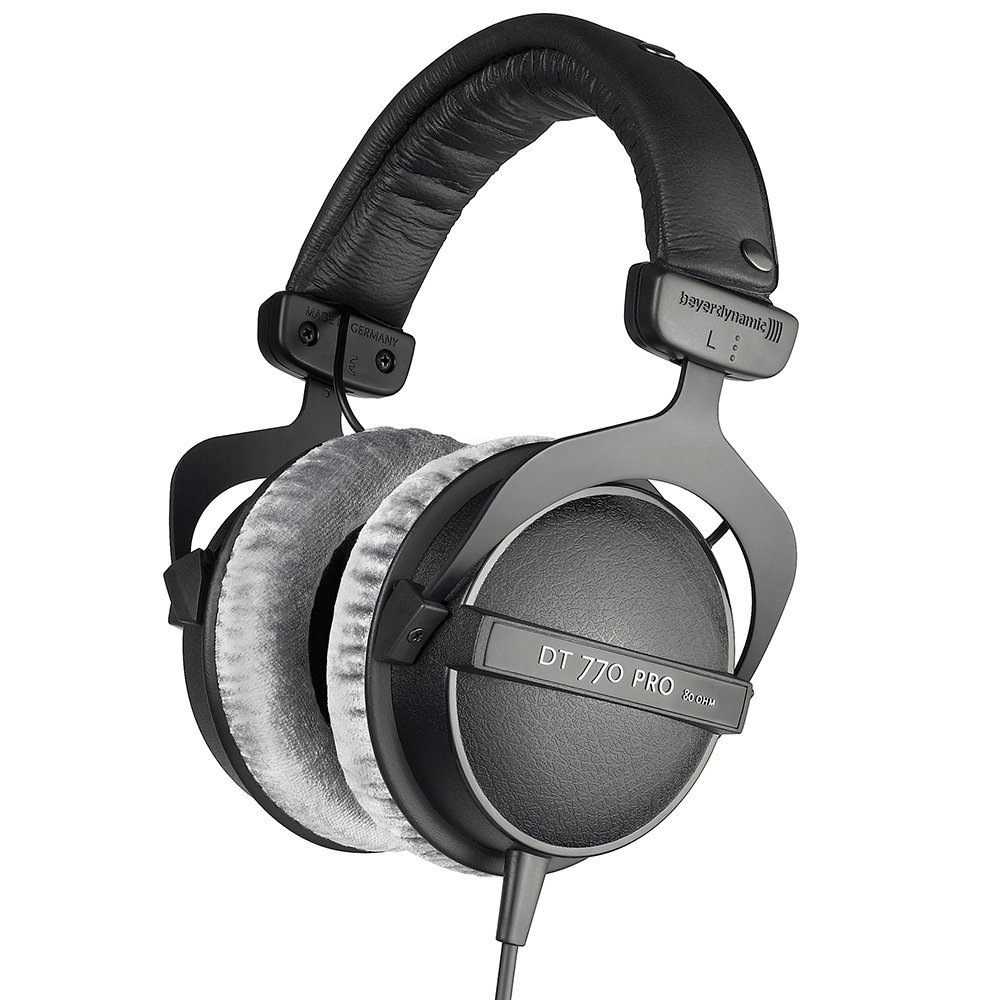
If I was to recommend one pair of headphones that will serve most editors incredibly well it would be the Beyerdynamic DT770 Pros. They are comfortable (even with glasses) for long sessions, deliver an accurate and reliable sound and are very affordable.
Ever since I first put this post together, 10 years ago, I have been exceptionally happy with them, in fact I still use the exact same pair to this day!
Buy Beyerdynamic DT770 Pros on Amazon Global Stores
The best headphones for film editing, the short list
The headphones in this post are grouped by brand and so do not appear in order of preference. If you want to dive right in, jump to:
Sennheiser Headphones | AKG Headphones | Audio Technica
Sony Headphones | Beyerdynamic Headphones
Here is a list of quick links to some of the best headphones for film editors, in the order they appear in the post.
These links will take you to your local Amazon Store, wherever you are in the world.
- Beyerdynamic DT770 Pros
- Beyerdynamic DT 700 Pro X
- Beyerdynamic DT250
- Sennheiser HD 280 Pro
- Sennheiser HD 380 Pro
- Sennheiser HD 300 Pro
- Sennheiser HD-25
- Sennheiser HD26 Pro
- AKG K240
- AKG K702
- Audio Technica ATH-M50x
- Audio Technica ATH-M70x
- Sony MDR-7506
- Sony MDR-7510
- nuraphones
- Sony MDRZX 110
- Sony MDR-V150’s
How to choose the right headphones
For comfort, you will definitely want circumaural headphones – which basically means the pads sit around the earlobe, rather than pressing down on them. This should help prevent your ears from hurting after many hours of use and reduce how hot they may feel too.
For quality, and suitability of our particular use, you want Monitoring headphones, or Reference Monitors – which is self explanatory really… they are designed for monitoring, so won’t colour the sound too much. This means they will provide a more accurate representation of your mix.
Some headphones that are more designed for music – such as the popular Beats headphones, artificially increase adjust the sound to increase the bass and other things. If you’re using these kinds of headphones then you’ll think there is more bass in your mix than there really is.
You’ll also want to avoid noise cancelling headphones too as they will be adjusting the sound to filter out background sounds. In the future I might update this post to include ear-bud headphones, as I know a lot of editors like using them for their portability, but they won’t deliver as balanced a sound as reference headphones.
One last thing you might want to look for specifically is the ability to replace the headphone cable, as this tends to be one of the most likely things to break or get damaged over many years of active service. I’ve included links to replacement cables where applicable.
Understanding the technical details of headphones
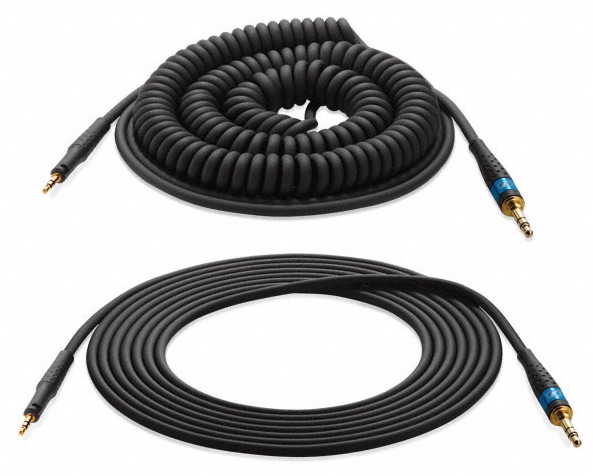
There are a few key terms that you need to understand to make sure your buying the right kind of headphones for film editing. One of my most technically minded post-production friends (thanks Gareth!) sent me this helpful explanation of the difference between open and closed back headphones and ohms.
Understanding Open & Closed Back Headphones
With closed back headphones, you have a trade off.
Fully closed will isolate more sound (for the listener and away from any bystanders) because of less ambient interference. But, as sound is about air pressure, with a speaker moving the air in front of it to create sound, and by default, the air behind it will move as well.
If that air can’t move as freely (being fully closed creates a buildup of pressure), it will affect the movement of the speaker and therefore affect the fidelity of the reproduction. Whether that difference is notable by the listener is another question.
I’ve personally tried closed and open back headphones side by-side, at first glance I couldn’t hear much difference.
A lot of high-end headphones tend to be semi-open to balance the issue of isolation vs fidelity. I think the Beyerdynamic 770 Pros have a small slit in the casing so the sound can breathe, despite being considered closed backs.
I suppose another crude summary – for personal use in public, on the tube etc. – fully closed; for use in a well insulated sound/editing suite – open/semi open.
Understanding Frequency Range
One of the key attributes to look for in a pair of headphones is the frequency range they can deliver.
Essentially the greater the range of frequencies the headphones can reproduce, the more accurate their sound. Human hearing is generally considered to be 20-20,000 Hz.
In my post on In-Ear Headphones for film editors there are some headphones which are considered to be capable of reproducing frequencies beyond human hearing.
Here is what the Sony site had to say about ‘High Resolution Audio’ and increased frequency range.
While most people can only hear frequencies from 20-20,000 Hz, [the Sony XBA-H3] actually reproduce 3-40,000 Hz. This is because infra- and ultrasonic frequencies are not heard—they are felt.
This creates the richness of live and studio-quality music experiences—an experience lost with compressed digital files or some other headphones.
Whichever headphones you end up choosing, you’ll want to see at least 20-20,000 Hz range (or greater), although depending on the particular make up of the inner workings of those headphones (drivers, type of metal in the cables etc.), the precise reproduction of those frequencies might differ, creating marginally different sounds for discerning ears.
This is pretty much why personal preference will always trump technical run downs and spec comparisons.
Understanding ohms
If you remember physics lessons back at school, electrical resistance (measured in ohms) is related to wire width. The thicker the wire the less resistance (as there is ‘more space’ in the wire for the current to flow through – think of it like water in a pipe, the narrow, the harder to get through).
Therefore speakers / headphones made with thicker wire need less power to drive and can therefore go louder, but that thicker wire (which is coiled around and around at the back of the speaker cone) is therefore heavier and means the speaker cone moves less freely, thus affecting it’s reproduction of the sound.
Conversely speakers / headphones made with thinner wire will move easier, but will need more power. Crudely speaking, lower impedance (less than 100 ohms), needs less power to drive, therefore can get louder; higher impedance (250 ohms), better sound but more power needed. Real world examples would be, less than 100 ohms – iPods, laptops, field recording; 250 ohms – hi-fi installations, studio monitoring.
And the end of the day in an ideal environment, 250 ohm headphones will sound better and more natural. If power is an issue and you don’t have a headphone amp, you could consider something like one of these:
FiiO Portable Headphone DAC Amplifier
Buy on Amazon.com | Buy on Amazon.co.uk
Plus it will most likely offer better quality than the built in headphone out of most laptops and due to it using USB. Check out this short review of several Fiio Headphone Amps.
Beyerdynamic Headphones
All of the editor’s I polled whilst researching this post highly rated either the Beyerdynamic DT250 or the Beyerdynamic DT770 Pros.
The DT770 Pro headphones come in three levels of impedance at 32 ohm, 80 ohm and 250 0hm. If you’re not planning on using a headphone amp, as mentioned above, go for the 80 ohm pair.
They are incredibly comfortable to wear especially for long edit sessions and do a great job of keeping my ears cooler than in other sets of headphones.
They also deliver tremendous audio fidelity and have remained in great shape after being stuffed into my edit bag on untold occasions. You can also get replacement velour ear pads, which are part of the magic behind their extreme comfort!
The only catch compared to some of the other headphones is that they don’t have the ability to replace the headphone cable, but if you look after them you should be just fine.
These are, without doubt, my favourite headphones for film editing.
Buy DT770 Pros from Amazon.com | Buy from Amazon.co.uk
Buy replacement ear pads from Amazon.com | Amazon.co.uk
What’s the difference between the Beyerdynamic 770, 880 and 990 Pro headphones?
The main differences between the variants of this series of headphones is how open they are. Check out the ‘Understanding the Technical Terms’ section for more on this, but the basic point is that the more closed they are the less you’ll hear the outside world, although technically a more open set will give you a more accurate sound.
According to the Beyerdynamic site, the headphones should be used in roughly the following scenarios:
- DT770 Pro – Closed back for studio or stage use
- DT 880 Pro – Semi-open back for reference monitoring, mastering or mixing
- DT 990 Pro – Fully open back for ‘critical listening’
Having recently tried a set of the DT 990 Pro headphones, back to back, with my DT 770 Pros, in a normal freelance editing environment (i.e. less than ideal), I have to say I prefer the isolation and focus that the closed-back headphones provide.
By blocking out more background sound, they definitely help you to focus on the work at hand and I couldn’t immediately hear much difference between them.
Beyerdynamic’s Pro Ranges Compared
Michael from the hugely popular (992k subs!) In The Mix YouTube channel shares his thoughts on the closed-back versions of each tier of Beyerdynamic’s professional headphone ranges:
You can also get an open back version of each of these (990/900 X/1990) and a semi-open version too (880/800 X/1880), should you prefer.
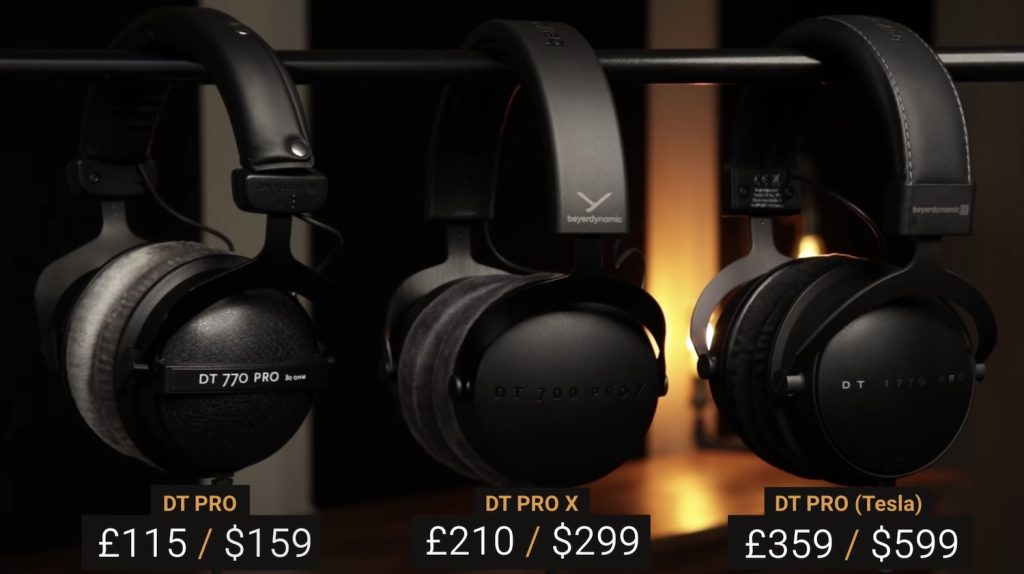
As you can see the very top of the Pro range cost about 3 x as much as my trusty DT 770 Pros, but should you be upgrading and to what?
Here’s Michael’s conclusion on each of the headphones but it’s also worth listening through how he describes the sound signature of each device here.
DT 700 Pro X – How do they sound?
“I’d say they have a similar bass response to the Classic range but where they’ve really reinforced it is in the sub bass. So it’s still a very clean sub bass but they just sound like they extend a lot deeper and they sound richer in that sub bass which, to be honest, makes them a lot more fun when you’re producing.
They’re definitely warmer through the low mids they don’t feel scooped in the low mids or the mid-range at all, however they don’t have the same airy treble response that the Classic range or the Premium range have.
They’re a lot smoother in the top end, and honestly, it’s a really interesting treble response because it’s not crispy or airy like you might normally be used to with Beyerdynamic headphones but it still has an awful lot of depth.
It’s very easy to still hear where things are placed, the stereo image is brilliant, it just doesn’t have that sort of airy quality that, I know for some people, can be a little bit fatiguing.” – Michael
DT 1770 Pro – Not for every day use
“While I wish I could take my DT Premium headphones with me everywhere, the reality is that to get the most out of those Premium headphones you really do need to plug them into a high quality amplifier, but I would never want to take these on the go – they’re the sort of headphones you want to keep them safe in your studio.” – Michael
DT 770 Pro – Still an excellent choice
“The classic DT pro range still represents the best value for money of any headphone I’ve tried and they’re not just good as your first pair of headphones – these would be good for your whole career, honestly.
They last for such a long time and it’s a really, really trusted sound profile.
The issue is one pair of headphones is not going to suit every device you might need to plug it into so you’re going to need to you know make sure that you’ve got the right impedance for the task.” – Michael
Sennheiser headphones
2019 Update – Sennheiser have discontinued both the HD 6 Mix and the HD 380 Pro headphones replacing them with the HD 300 Pro series. If you can find a pair of either of these headphones they’re still well worth your consideration!
Scroll down for details on the new HD 300 Pro headphones.
Sennheiser HD 280 Pro: These are their cheaper pro monitoring headphones, and considering that, and the brand, this seems like a really good value price.
Buy from Amazon.co.uk | Buy from Amazon.com
Sennheiser HD 380 Pro: For not much more, these are their top end ones – better audio range, build quality and a replaceable cable – Take these over the cheaper ones.
Sennheiser HD 380 Pro Headphones were one of the pairs Sennheiser sent me for testing. After several extensive 8 hour editing days, I can say that they offer excellent sound quality with great clarity in both the high and low end, and, if you get them set up and positioned correctly on your head (I found I had to have the band a bit further back than normal for maximum comfort) they will carry you through the day without a hitch.
One of my favourite things about them is that they a) come with a travel case and b) fold flat into the travel case which really helps when you’re fitting them into your editing bag with the rest of your gear. These were originally in the final running for my selection for good reason, a great buy for any editor who travels frequently.
Buy from Amazon.co.uk | Buy from Amazon.com
One of the slight niggles with the HD380 Pro’s is the heavier coiled cable, which you can see in the image above. Some users like to replace it with a lighter weight cable like this one.
HD380 Pro Replacement Cable on Amazon.com | Amazon.co.uk
June 2019 Update – Sennheiser have recently discontinued the HD 380 Pro headphones and replaced them with their brand new HD 300 series headphones.
I’m hoping to get my hands on them soon to personally review them for this post, but looking at the specification and the build quality, they look like they should be a great option in terms of very high quality neutral sound reproduction, comfort over long hours due to the large pads and solid Sennheiser build quality.
Although it’s worth noting that they do have a narrower frequency range (6-25k Hz) than the previous Sennheiser HD 380 Pro and HD 6 Mix headphones or the Beyerdynamic DT 770 Pros (5-35k Hz), which are still my personal recommendation.
The HD 300 model have ‘passive noise cancellation’ which essentially means their closed backs will block out local sound, rather than actively parsing out troublesome frequencies through active noise cancellation.
The HD 300 PROtect model has an interesting feature, presumably aimed at live sound use, which “reduces signals that are too loud down to a safe level.” So anything above 110 dB it will smoothly reduce in volume, without clipping. These are only marginally more expensive than the HD 300’s and you can switch this feature on and off, so it could come in handy if you’re also moonlight in live-sound production environments.
Buy on Amazon.com | Buy on Amazon.co.uk
Sennheiser HD-25: Light and comfy. Popular with DJ’s and Video/Film Sound guys due to the ability to swing one ear away. These are not circumaural and so will sit on top of your ears. If you’re in a noisy environment this might help block out even more background sound, but for comfort reasons you’re best going for a different set.
Sennheiser also sent me the HD26 Pro Broadcast headphones. These are not circumaural headphones, which means that they sit on your ears, rather than around them.
This might well be a benefit in broadcast production, for which their closed design is intended – and helps to keep out surrounding noise, but after several hours of use whilst editing I found them to be quite hot and uncomfortable.
Although they are light weight and provide excellent sound quality I would highly recommend choosing a pair of circumaural headphones instead to provide constant comfort during long editing sessions.
Buy from Amazon.co.uk | Buy from Amazon.com
AKG Headphones
AKG K240: Another great make, my editor friend Alex has 2 sets of AKG headphones.
These have a slightly smaller range (15-25,000 Hz) of frequencies than the top end Sennheiser’s (8-27,000 Hz), but are slightly cheaper.
Alex mentioned that these are the most comfortable things he has ever worn. Again, there is a detachable/replaceable cable.
Buy on Amazon.com | Buy on Amazon.co.uk
AKG K702: My editor friend Alex has these, except he has the non-pro model, which basically just means the cable isn’t removable, and they are a much prettier colour!
Even though they are way more money, Alex suggested them to me because he loves them and thinks they are worth it.
They need to be listened to for some time to break in the sound, but they are great and super comfortable!
Buy from Amazon.com | Buy from Amazon.co.uk
Audio Technica Headphones
Audio Technica ATH M50x – These headphones seem to be an increasingly popular alternative choice, for many editors. The ATH-M50x are the follow up to the ATH-M50 headphones, which were much more directly geared towards professional monitoring use.
The ATH-M50x have a high quality, if slightly bass-led, sound, with lots of definition in the high end and decent isolation from background noise due to their closed-back design. The frequency response is listed as 15 – 28,000 Hz. They also have a more compact and portable folding design.
A reader of the blog, Seb, shared his experiences in the comments below, on the pros and cons of the M50x:
“I’ve got the ATH M50xs – the sound is great, good insulation from external noise, but they are essentially DJ headphones, which means they’re quite tight on your [head] and can get a little uncomfortable after a while – I need to take little breaks from using them during the day. Because of this, I’d hesitate to recommend them for work use.“
The ATH-M50x headphones come in a choice of black or white and ship with three detachable cables, offering you a choice of lengths (1.2m v 3m) as well as straight and coiled.
All things considered I would still highly recommend the Beyerdynamic DT770 Pro headphones for comfort and quality and they only cost a little bit more than the M50x’s.
That said, if anyone from Audio Technica reads this and want’s to get in touch, I’d be happy to update this review from a personal perspective!
Audio Technica ATH M70x – The flagship headphones in the M-series these are more accurate in their sound reproduction that the slightly bassy M50x’s. They also cost nearly twice as much!
So what’s the difference between the ATH-M50x and the ATH-M70x?
Well, Audio Technica claim that the M70x benefit from an improved audio tone that is “even more precise in medium and low frequencies than the ATH-M50X.” As well as a more ‘refined design’ which makes them lighter (by only 5g!) in comparison to the M50x headphones and with a better fit.
It’s possible that this improved design would reduce the kind of tightness that Seb is talking about, making them more comfortable for longer sessions.
In comparing the specifications the M70x have a much wider frequency response at 5 – 40,000 Hz and a slightly lower impedance at 35 ohms compared to 38 ohms. Although they seem to be constructed from the same 45 mm driver and internal metals.
Without giving them a side by side listen, it’s hard to say where the price/quality improvements come in.
Sony Headphones
Sony MDR-7506: These are the slightly better, much more comfortable version of the (cheaper) ones you see in loads of edit suites – from universities to post-houses, but basically they are otherwise the same.
I think they are considered to be good for editors, this, of course implies that they aren’t great for sound mixing, but are close enough for general reference/mix. The frequency range is 10-20,000 Hz.
The difference between these and the ones you normally see in suites, is that these have proper big ears for comfort instead of those little round ones, and a better cable.
Buy from Amazon.com | Buy from Amazon.co.uk
Sony MDR-7510: These are Sony’s much better equivalent in terms of getting a more accurate sound.
Actually they seem to have the widest range of audio frequencies of the lot, (5 – 40,000 Hz) so in the sound sense they are the ‘best’ of the Sony’s. They also have a larger 50mm driver compared to the 40mm driver of the 7506’s, so should deliver a better sound too.
Buy from Amazon.com | Buy from Amazon.co.uk
Film Editor’s Headphones, My Choice
I’m currently choosing between the Sennheiser HD380’s and the Beyerdynamic DT770 Pro’s.
I went for the Beyerdynamic DT770 Pro’s in the end and they have been both extremely comfortable for long editing sessions and provided fantastic depth and clarity even in the midst of a busy office environment. I would highly recommend them!
Having now personally worn the Sennheiser HD380 Pro’s many times, I would happily recommend them as superb headphones, but I would say that I’ve personally found the Beyerdynamic DT770 Pro’s to be the most comfortable for really long editing sessions.
Film Editing with nuraphone Headphones
Added May 2018
I recently got to review the first set of headphones from the insanely successful* Kickstarter backed company, nura. I ended up writing over 5,000 words on these headphones in this post on using nuraphones for film editing. I’ll be a bit more concise here.
Nuraphones are a completely different kind of headphone as they use both an over-ear speaker set and an inner ear bud at the same time. This helps to split the frequency range to deliver maximum audio resolution and fidelity.
Not only that, but their unique method of calibrating the headphones to account for how you personally hear sound enables them to deliver a sonic experience like no other headphones I’ve tested. You really have to hear it to believe it.
In this regard they are a superior set of headphones to use for film editing, compared to my personal favourites the Beyerdynamic DT770 Pros, as you can now more accurately hear everything in your mix, rather than missing things because your ears don’t hear those frequencies as well as they do others.
When comparing the too headphones side by side, the nuraphones delivered a deeply detailed soundstage that transformed every music track I listened to, with a depth of bass and clarity of the mids and high-end that make the Beyers’ feel flat and thin in comparison.
That said, they’re not cheap at about £349 in the UK.
They’re also not as comfortable as the DT 770 Pros, due to the inner ear bud sometimes applying pressure to your ears, if you don’t have the fit quite right, but this was only over multi-hour sessions that are sometimes required when film editing on site.
For all these reasons I would highly recommend that you check them out as they deliver an exceptional experience, but if comfort over 4-8 hours of constant use is critical for you, then I’d recommend using the Beyerdynamic DT 770 Pros, as the most comfortable headphones I’ve used.
Read my full review here and use this referral link to save 20% on a pair of nuraphones if you choose to try them for yourself through the 30 day money back guarantee.
Buy on Amazon.com | Save 20% on nuraphone.com
*Nura’s initial campaign was for $100,000 they raised $1.8 million!
A Full Size Protective Headphone Case
If your headphones of choice don’t come with a rugged travel case, then to protect your investment you might want to grab one of these Slappa Hardbody Professional headphone cases.
Designed to fit with many of the headphones listed in this post (and many others!) the crushed velveteen inner lining will keep them scratch free in transit, whilst the fire-resistant and water-retardant outer shell will keep them protected from the usual bumps and bruises.
The centre of the case leaves plenty of room to coil in your cable in a tidy fashion.
Check out the extensive product description for a list of all the headphones they have been tested with, to be sure they’ll fit your particular brand and model.
Buy on Amazon.com | Buy on Amazon.co.uk
Affordable Alternatives…
I added the Sony MDR-V150’s as a reader had asked me to include an affordable alternative set of headphones that wouldn’t break her limited budget.
It turns out that those headphones have now been superseded by the Sony MDRZX100 and 110 series headphones.
I’ve not had a chance to try them out myself but several of the reviews I read said they sounded far better than their cheap price tag would lead you to believe. They also come with some additional benefits over the V150’s including the option of a in-cable microphone so they can double up for phone calls, a range of colour options and a foldable design for more compact travel.
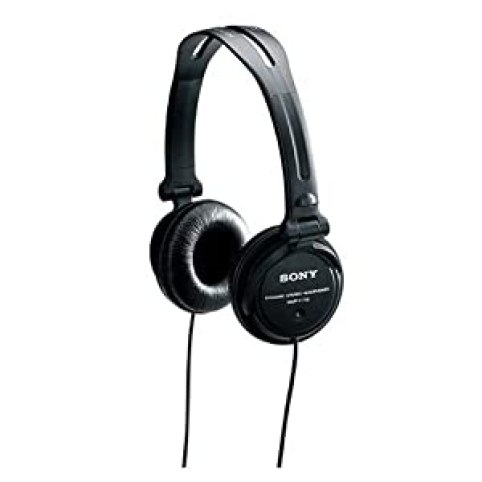
Buy on Amazon.com | Buy on Amazon.co.uk
If you just need a pair of cheap and simple headphones to get you started, then I’d recommend these Sony MDR-V150’s, which I found once in a Soho edit suite.
Nice sound, pretty comfortable and reasonably priced at under £20/$30. I’ve had a pair for years.
Buy from Amazon.co.uk | Buy from Amazon.com
More Affordable Headphones – $50 to $150
Michael from In The Mix reviews a whole host of headphones that cost under $150 in this useful video, which also includes several of the headphones listed in this post.
Michael’s top picks are:
- $150 – The Beyerdynamic DT770 Pros and the Audio Technica M40X
- $50-80 – Audio Technica M30X and Beyerdynamic DT240 Pro

Interestingly, Michael had nothing good to say about the Sony MDR 7506 headphones which are often considered an ‘industry standard’!
Michael knows what he’s talking about, has tested all of these himself and offers a detailed and thorough review of each headphone.
In-Ear Headphones for Film Editing
If you’re looking for some recommendations on high quality, comfortable and accurate in-ear headphones, that are (mostly) affordable, check out this brand new post that rounds up numerous options at various price points.
The post also breaks down what to look for when it comes to in-ear headphones, delivers some personal recommendations from trusted editors and composers I know and provides some tips on getting the most out of your new purchase.
My only caveat to in-ear headphones when it comes to your final mix is that you should really be doing that on a set of professional grade Studio Monitors (like these) or if that’s not possible on some over-ear headphones like the ones in this post.
Professional Post Production Headphones In Use
Every now and then you can catch a glimpse of headphones being used in a professional post production context and it’s always interesting to see which headphones have been selected. In this still from Michael Bay’s behind the scenes of Transformers 4 you can see Peter Cullen (the voice of Optimus Prime) wearing the Audio Technica ATH-M40 Headphones.
In this screen grab from a behind the scenes featurette on the sound design for Pixar’s Brave, sound designer E.J. Holowicki is wearing some of the Beyerdynamic DT770 Pros.
Common Questions on Using Film Editing Headphones
Once again, the knowledgable and articulate Michael from In The Mix, answers three common questions about using headphones in post-production.
Can you mix in headphones vs Studio Monitors?
Which OHM value headphones should you buy? (32, 80, 250ohm)
Are closed or open back headphones best for mixing and mastering?

If you’re interested in buying a pair of professional Studio Monitors for your edit suite, here’s my previous post all about that.
Testing your Headphones – Things to Listen To
One of the things to do when you get your new headphones is to listen to a few of your favourite tracks, films, trailers etc to get a feel for how things used to sound, and how they sound now with your serious new headphones. One of the things you may find is how badly encoded some of the music you’ve been listening to is and that with decent headphones, the source quality really matters.
Personally I love to listen to film scores, and this recording by the London Symphony Orchestra at Abbey Road Studios from Alexandre Desplat’s score to Birth, is a great way to check out both the high and low end capabilities of your headphones. That or a properly mixed film trailer.


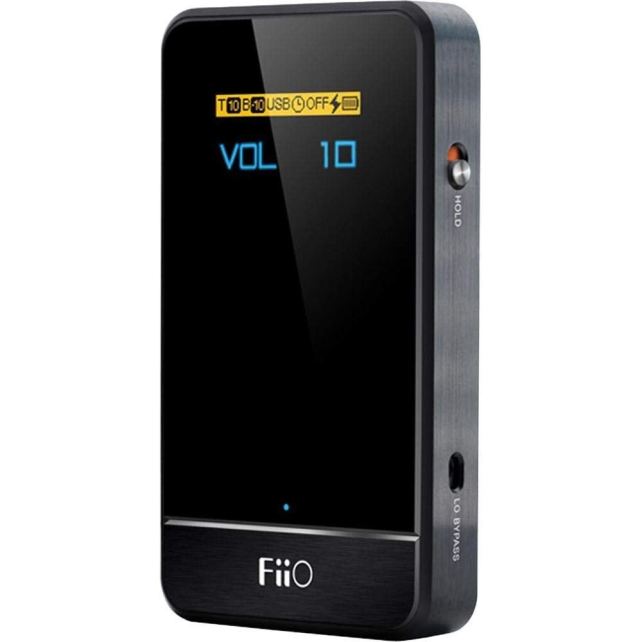
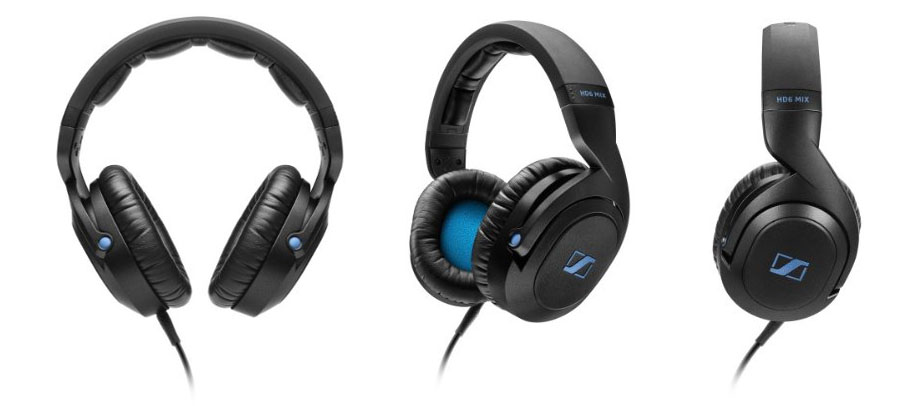
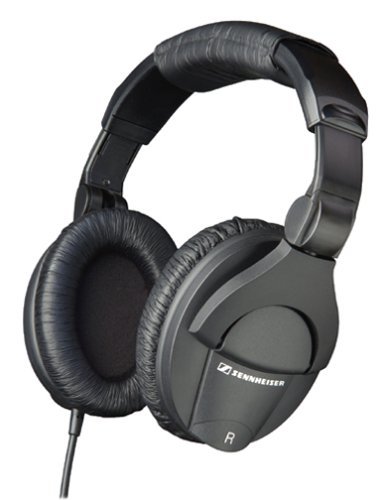
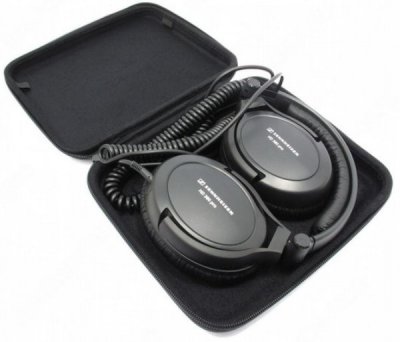
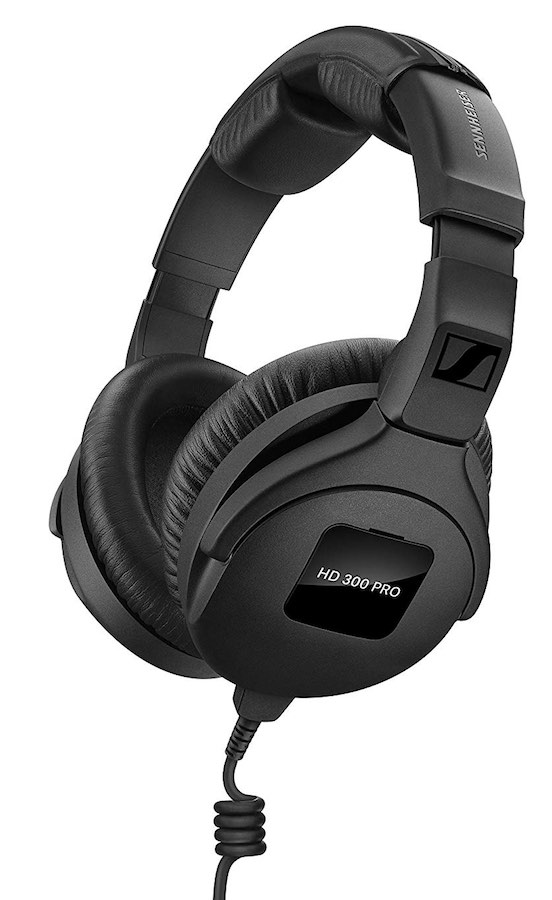




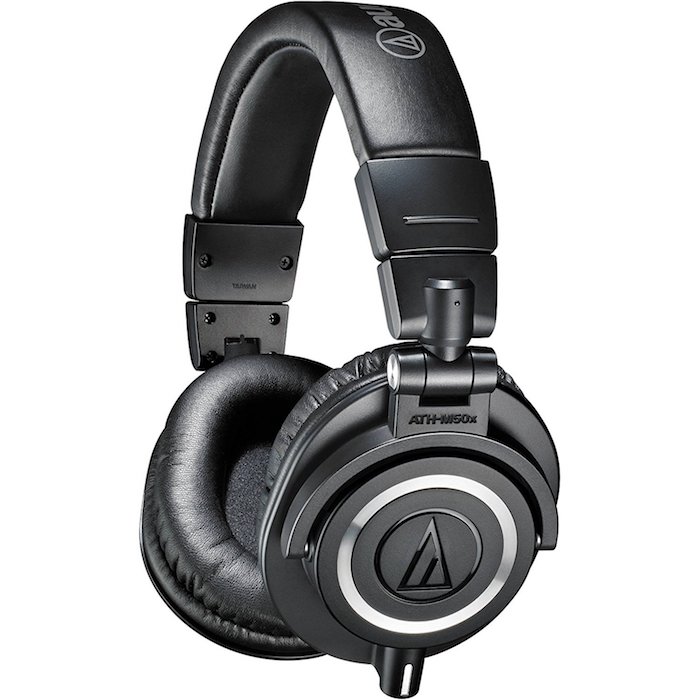
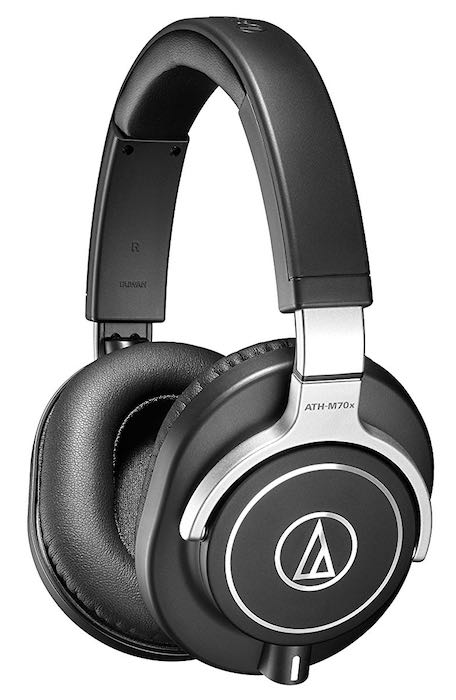
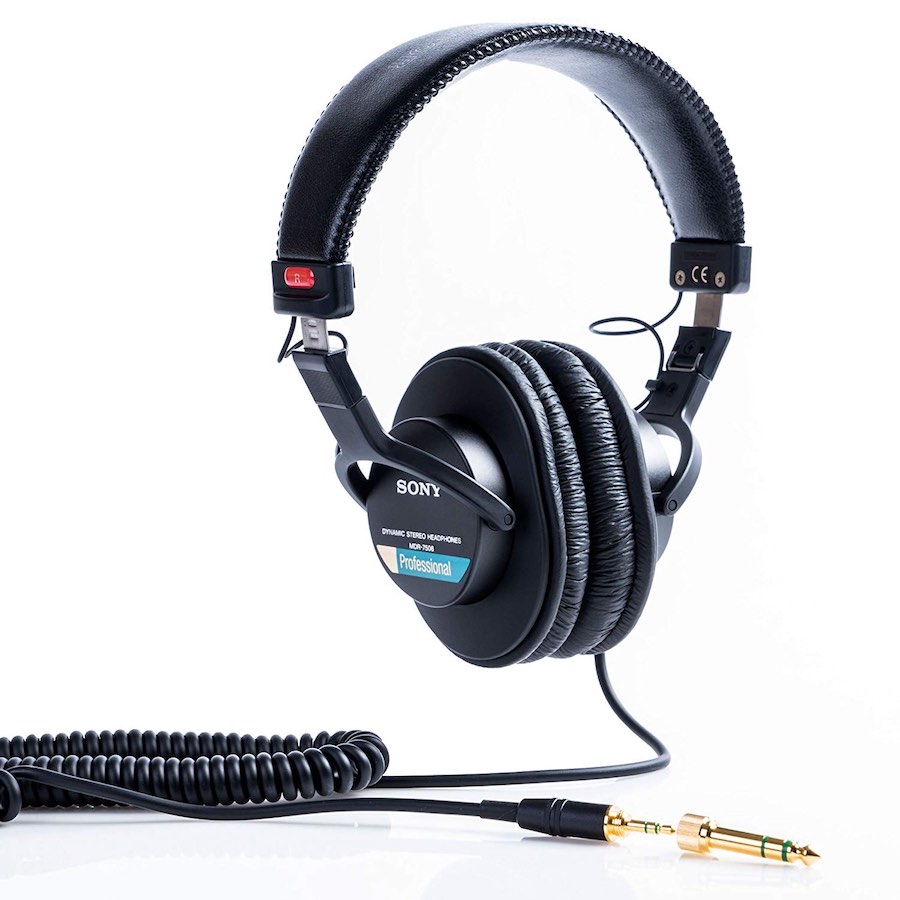

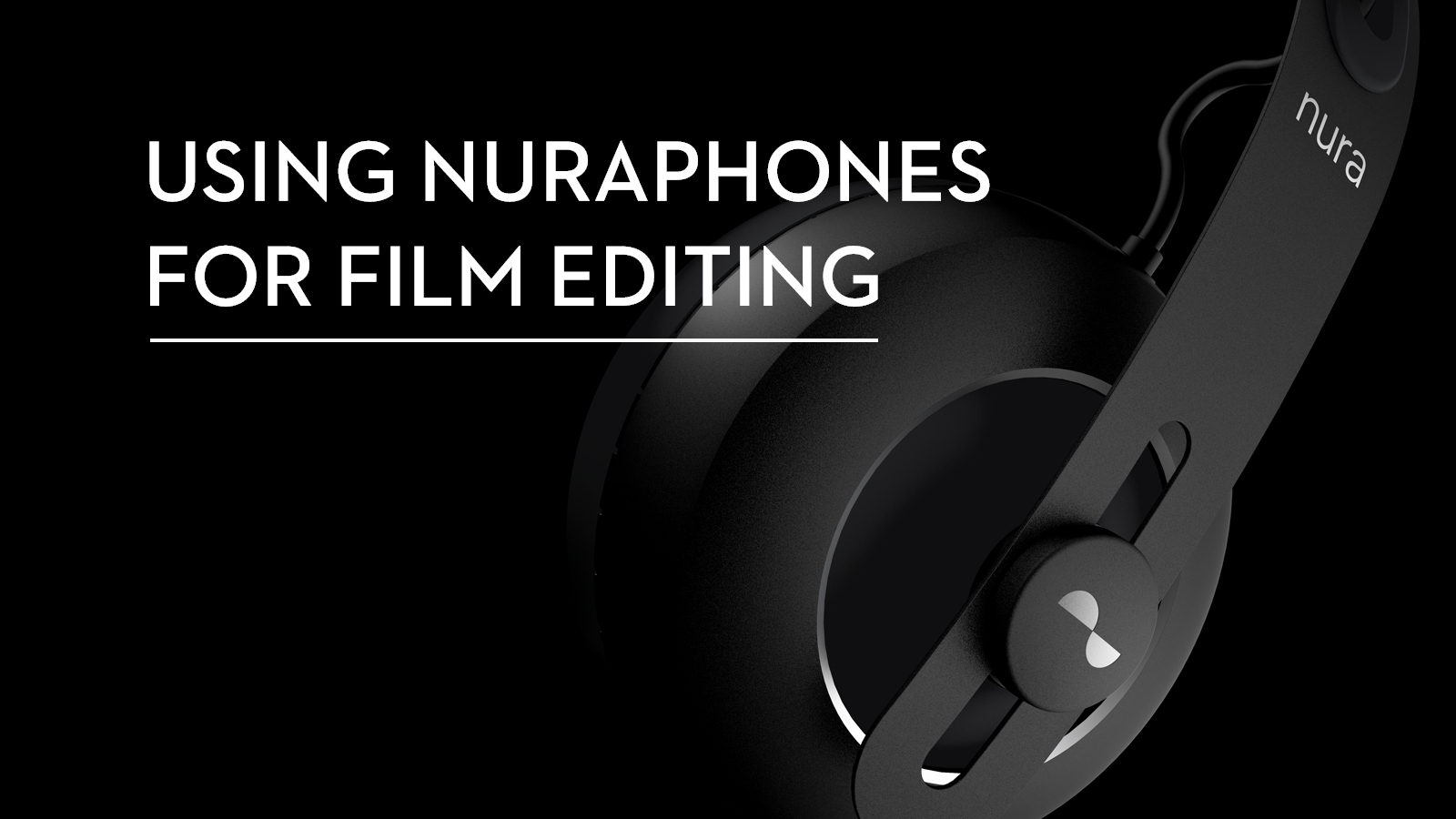
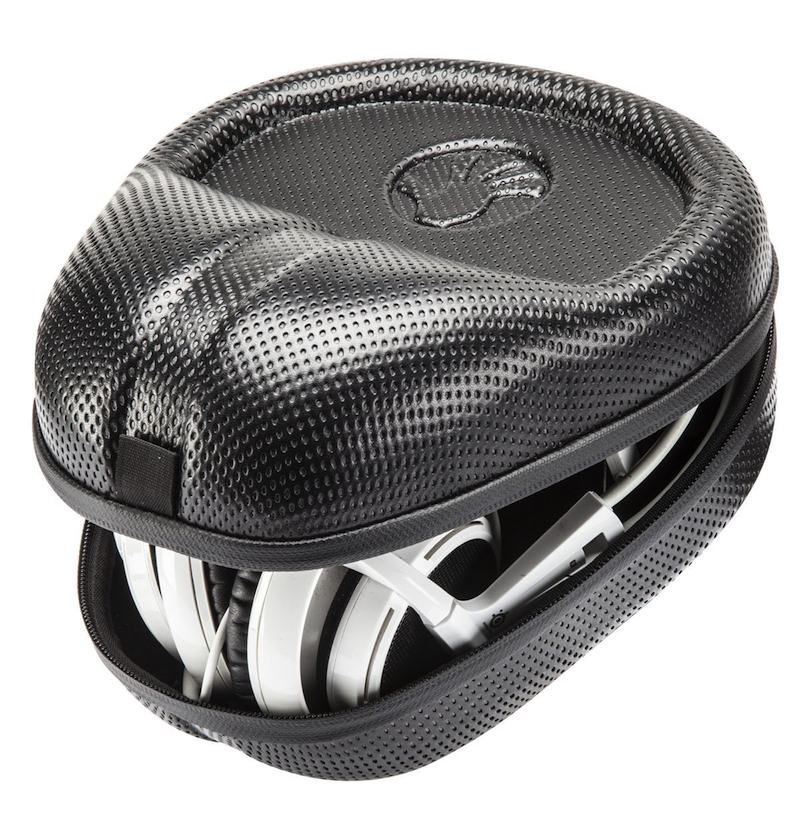


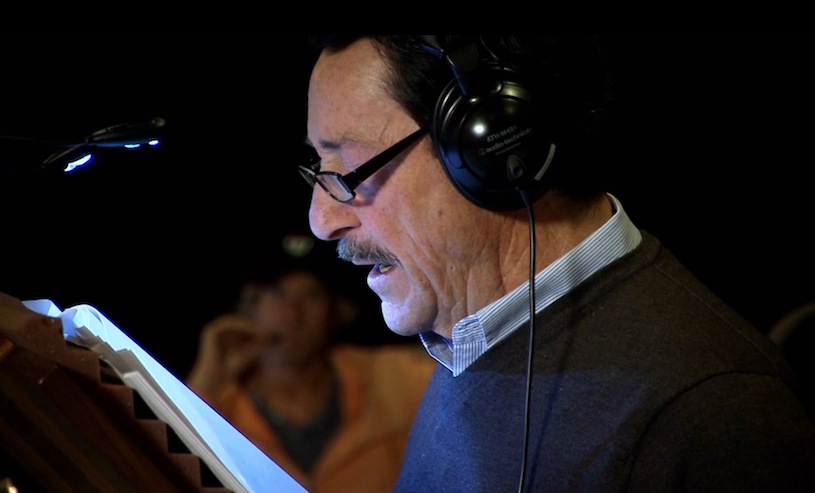




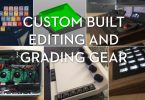
Hi Johnny, the article is wonderful and you have answered every question that I was thinking off. But I still can’t choose the right headphones, what should I choose the Audio technica m50x or the Beyerdynamic dt 770 pro 80 ohm
Hey Yuvan
I’ve not tried the ATH M50X personally so I can’t say, but yes I still use the same pair of BeyerDynamic DT770 Pro 80ohm’s to this day and I love them. So they’re super comfortable and they will last if you look after them!
Do you still use it as a main headphone?
Hey Johny,
The article was very informative.
Are there any headphones that are wireless and light weight that is fit for editing?
Thanks,
Alisha
Hi Alisha
Thanks for checking out the blog. This is an area of headphone technology that I need to look into! The nuraphones are excellent, although not hugely light weight.
I need to get around to trying out some more wireless headphones – The Bose Quiet Comfort 35s II are a popular over ear wireless option. Not cheap though.
https://amzn.to/2ECZ4PE
It’s also worth looking at the IEM post I put together for lighter headphones, although those aren’t wireless.
https://jonnyelwyn.co.uk/film-and-video-editing/the-best-in-ear-headphones-for-film-editors/
What kind of budget are you aiming for?
cheers
Jonny
Hi Jonny,
Thanks a lot for the reply.
I’m looking for around a $100. I wouldn’t mind going for a good wired one if its light weight because long hours of editing with headphones are giving me a bad neck pain.
Do you recommend Beyerdynamic Byron?
If you can stretch to $150 I would highly recommend the Beyerdynamic DT770 Pros 80 ohm as they’re exceptionally comfortable, lightweight and sound great.
Also I personally find over-ear headphones much more comfortable for long, multi-hour, all-day editing sessions than in-ears.
I’ve not tried the Byrons.
Hi Jonny, thanks for your insights. Great site. I’m about to pull the trigger on a pair of Beyer 770s, but I’m trying to decide between 32 and 80 ohm. They’ll be used for editing, plugged into the back of an iMac. Any idea? Thanks a mil. Hugh
Hey Hugh
I’ve had the 80 ohms for ages and they’ve been great for the kind of scenario you are describing. Looking on Amazon it seems like the black 32s have ‘leather’ pads as opposed to the velour and I would highly recommend sticking with the velour pads for comfort!
The 32’s should be easier to drive than the 80s but I’ve not had any problems with any of the Mac computers I’ve used, nor my iPhone. They’re also about the same price as far as I can see.
This post lists the spec of the iMac headphone jack https://support.apple.com/en-gb/HT204392
“But when I’m working at home, I’m falling in love with the Sennhesier HD6 Mix headphones…”
Hi,
So do you prefer the Sennheiser over Beyerdynamic? Why just when you are at home?
Thank you
Hey Ana
I really like the Beyerdynamic DT 770 Pros – their really comfortable, have a great sound and are wearable for hours and hours at a time. The HD6 Mix headphones are a bit more chunky and therefore a little more cumbersome to take out and about, or to client offices – which is usually why I wear them at home (when I need to wear headphones) sometimes. So they’re both really good headphones, I guess it depends on how portable you need to be with them for your own work.
The HD 380 Pros are also great for taking places as they fold flat and come with a case. They’re also really comfortable for long sessions (not as comfortable as the DT 770s for me) and have a great sound.
Not sure if that helps! I guess it depends on how much portability and comfort over long sessions matters for what you’re doing?
Jonny, thank you very much for so quick response!
I’m broadcast editor, my contracts vary from 3 to 6 month… one year… so I think portability it’s not essential. The post prod facility I’m working now has the producers close to editors, very noisy, I was looking for the best isolation I guess, it’s been hard to focus and of course always quality and sound fidelity.
I might go with Beyerdynamic then…just found one on eBay for AU$100 !!! We tend to believe the more expensive the better but with all the good reviews I think it will be a winner.
Thank you!
Well I think the Beyer’s are great so I hope you enjoy them too! It’s tricky if you can’t find a good quality music store that has a lot of stock to try them on for yourself before you buy.
Hope they work out for you!
And Audiotechnica?? At-mx40 o 50?? It is good headphones for monitoring audio
Hi Sal.
Yeah the Audio Technica ATMX40 and ATMX50 and ATMX70 are all popular models for post production work. I’ve reached out to AudioTechnica several times trying to get hold of some review headphones, with no luck so far.
I’m going to update the post with a mention of them though. Thanks for checking out the blog!
Thanks Jonny for an amazing post. Currently I am trying to decide between Beyerdynamic DT 770 PRO and the AudioTechnica ATH M50x. I am more worried about sound quality than anything else. Which one do you think I should go for?
Hi Harsh, Thanks for taking the time to check out the blog. I haven’t heard the ATH M50x in person, but they are very popular. I personally have loved the quality and comfort of the DT 770 Pros, so I can highly recommend them.
If you can pop down to a local music/audio store and see if you can listen to some in person?
I’ve got the ATH M50xes – the sound is great, good insulation from external noise, but they are essentially DJ headphones, which means they’re quite tight on your noggin and can get a little uncomfortable after a while – I need to take little breaks from using them during the day. Because of this, I’d hesitate to recommend them for work use.
Hey, thank you for the reply. I live in a city in India where they don’t have the M50x at any of the stores but I ended up getting the DT770pro and they are amazing.
Glad to hear you like them too!
Hey Harsh,
Can you tell me which DT-770pro did you get? 32,80,250 ohms
Starting out in a college situation do you think it is wise to invest now in high-end equipment or start off basic in order to develop and hone your skills?
Hi Michael
I think that all depends on your budget and what you’re buying. A good set of headphones should last you a good few years, so probably worth some investment (if you can afford it and if you look after them).
When it comes to other film editing gear, they can have very different shelf life’s, so it depends on what you’re looking to buy.
But I would lean towards spending your time and money honing your skills and buying more expensive ‘stuff’ as and when you’ve got a business case for it!
Hi, thank you for this piece and what appears to be a very interesting site. I am planning on checking more of it over the next few days.
I want to ask a relevant question. I have the Beyerdynamic MMX300. I haven’t used them for film editing, never planned to. They are very good all around headphones but the sound department is not my best. Have you by any chance used them at all? Should I really go for something else for editing?
The other thing I want to ask you is if headphones should in your opinion even be used for video editing. I have heard that you shouldn’t really use headphones and always prefer speakers/monitors. That’s why I was leaning towards getting something like the Behringer MS16 or the Mackie CR3, but now I wonder if headphones would be ok too.
Hi Efthimios
Thanks for taking the time to check out the site. In answer to your first question I’ve not had any experience with the Beyerdynamic MMX300 headphones, but taking a quick look at them, they look like very high quality headphones.
That said, the thing you’re really looking for is an ‘uncoloured’ sound – so a sound where the bass isn’t enhanced etc, but it’s a little tricky from the description online to tell what they are doing. They’re probably very good headphones and will work just fine for editing with – especially if you already own them!
In answer to your second question. Yes a set of studio monitors is the preference for editing and mixing on, when you have a private room to do so. The only reason to work with headphones is when you might be editing in a shared environment and need to a) not annoy other people b) focus on your work.
Here is a post I wrote on The Best Studio Monitors for The Edit Suite – in which I personally went for the Yamaha HS7 speakers, but both Mackie and Behringer make good ones too.
Hope that helps a little!
Jonny
I use Audio-technica ATH-M50X. I absolutely love these headphones. The number 1 most important thing for me is comfort as i wear my headphones around 8-10 hours a day. My ears never hurt after a long day editing because they go fully around my ears. Second is the sound quality is amazing, they are not consumer grade bass factories and produce stunning audio at all ranges and frequencies. The only drawback is that they are so much better than average speakers that i have to constantly switch to speakers to make sure that my scoring sounds as good on average speakers as they do in my headphones. These headphones sell for around $170 on B&H though.
I 100% agree with Robert. I also own the Audio-Technica ATH-M50Xs; they are perfect, in my opinion. I use them for film editing, listening to music, and live radio broadcasting. They are comfortable, stylish, and most importantly precise and beautiful in their sound reproduction. I HIGHLY recommend them!
Thanks for the recommendations guys, really helpful.
I just bought a pair of Sony 7510’s and man are they terrible. DO NOT BY THEM. The mids are absolutely out of control. One pair that he doesn’t mention here are the Ultrasone HFI-450’s. You can find them for a good bit cheaper than the Sony’s and they are far superior. I’ve handled some very heavy mix jobs on them and they did great. My dog chewed them up so I decided to try what I thoguht was a higher quality pair in the Sony’s. I hate them.
Hey Will, thanks for sharing your experiences. I’ve never heard of the Ultrasone brand before, so good to have a recommendation.
Hi Jonny. You mentioned that the DT 770 Pros were great in loud situations. Where I work, it’s not uncommon for folks to have small meetings 10 feet away, at normal conversation levels. How do think they’ll hold up in those kinds of settings?
I saw the DT 770M had better noise attentuation (35db), but I also read that they aren’t nearly as comfortable, and that the sound quality doesn’t compare to the 770 Pros.
What are your thoughts? Are the 770 Pros the way to go? Or do you think there are other models in this price range worth considering, for loud situations?
My pros are really comfortable, especially over long sessions and pretty decent at blocking out external noise in office settings.
Not tried the Ms so can’t speak to their comfort though.
On the UK amazon the 80 ohm pros are cheaper than the Ms at the minute.
SO do any of you wear glasses? One of the biggest problems I find with cans is the discomfort caused by the arms of my giglamps during long sessions.
Which of the headphones might be best for glasses wearers then?
Good question! Hopefully someone will have a decent answer…
A chap named Ugo emailed me with the following question and I thought it might be helpful for others too, so here it is posted with permission.
Hey Johnny,
I enjoyed reading the post on headphones. Very informative and very helpful as I am looking at buying a pair.
Usually very long session, 6 to 8 hours, so I am leaning toward the Beyerdynamic DT 770 PRO. I hope I can ask you for an advice. My question is should I get the 80 OHM or the 250 OHM model considering the amp we will be using it from is a Focusrite Scarlett 2i2? (The output impedance is less than 10 ohms)
I would love your input if it is not asking too much as there is a difference in price of about $90 less in the 250ohm, but I am also looking at getting the best sounding ones with no distortion, etc…
Cheers!
Ugo
—————————-
Hi Ugo
Thanks for getting in touch. In my personal experience the DT770 Pro 80ohms have been very comfortable over long sessions and always sounded great whatever they’ve been plugged into.
These articles go into a lot more technical detail and might help.
http://nwavguy.blogspot.co.uk/2011/02/headphone-impedance-explained.html?m=1
“Device Output Impedance – This is tricky because the output impedance of most sources is unknown. But the idea is to follow the “1/8th Rule” described in Output Impedance Explained. If you multiply the output impedance of your source by eight, that’s the lowest impedance headphones you should use with that source. The FiiO E9amp, for example, has a 10 ohm output impedance. So it should only be used with headphones of 80 ohms or higher if you want to be assured of the best sound quality.”
And
http://www.hydrogenaud.io/forums/index.php?showtopic=93513
And
http://www.amazon.com/ask/questions/Tx17VM80CLOJTKG/?
Price wise, it’s strange that the headphones are so differently priced in the U.S. across the range, because in the UK they are basically the same price across all three models (32, 80, 250).
So you could ‘save’ the $90, go with the 250’s and spend less than $90 on a portable headphone amp, like the Fiio ones.
Any help?
If you can find the 80ohms for a reasonable price though, they might make life easier.
Cheers
Jonny
Hi there again.
I read in a lot of forum’s that the DT 770 PRo have recessed mids. In other words human voices are mediocre and also classical music is bad.
So my question to you as an editor is. Do you feel that editing dialogs is bad on these headsets ?
Thank you once more 🙂
Hi Joao, I haven’t noticed that myself but I’m not an audio expert, just an editor! I’ve always been very happy working with them, cutting dialogue, mixing in music and effects etc. It all comes down to personal preference at the end of the day…
Hello,
Thanks for your wonderful article! I’m a soon-to-be university student, studying film production. Obviously, whichever headphones I choose will be used for post-production playback through my Macbook Pro, but I’d also like the pair to be compatible with my iPhone for listening to music. I’m assuming I’ll want a pair will less than 100 ohms? Or is that incorrect? Which would you recommend for me?
Thanks so much!
Hi Isaac, thanks for checking out the post and good luck at University! It all depends on what you want to spend but a good pair will last you many years if you look after them.
My personal favourites are the DT770s which come as both 80ohm and 250 (if memory serves). So get the 80ohms for use with the phone. I’ve used both the DT770 and the HD380’s with my iPhone, no problem. Hope that helps a little.
Thanks for your response! Do you have any experience using the Sennheiser HD 598? I came across them online and think they look really cool. The reviews of them are very positive—especially for music. I haven’t ever had a “nice” pair of headphones, so I don’t have much experience in determining quality. Would a pair of headphones that sound great for music be equally as good for video editing?
I researched the DT770s, but the lengthy, nondetachable cable would make it difficult to use on-the-go for casual music listening.
I’m also looking at the Audio-Technica ATH-M50xBL, which have very high reviews. Have you used them?
In terms of your recommendation for the Sennheiser HD 6 Mix DJ Headphones, my only concern would be its 150 ohms. Would that not be compatible with editing on my laptop or use with my phone?
I’m not sure what to do. Too many good choices! 🙂
Hi Isaac, I’m afraid I don’t have any hands on experience with the headphones you’re talking about, but at that level I’m sure they will all be good enough!
First of all thanks so much for the reviews, i´m a video editor and that was precious information for me 🙂
Now i have a decision to make and its between the Beyerdynamic DT 770 Pro and Beyerdynamic DT 770 M. The main reason im divided is because of the Ambient noise attenuation.
On the Dt 770 Pro its only 18dBA and on the Dt 770M is 35 dBA. But on the 770M the only downsize is the Average pressure on ears 6.5 N, compared to only 3.5N on the 770 Pro.
So my question to you is does these number really care? is 18 dBA enought for editing on set or in a room full of people all talking?
At the end of the day does de extra pressure will make editing impossible?
PS Does the Sennheiser HD 380 Pro feel more uncomfortable at the end of a day of editing? as compared with the DT 770 Pro?
Sorry about all the questions.
Thanks so much 🙂
Hi Joao, thanks for your questions. In my experience the DT 770 Pros are the most comfortable headphones I’ve used, even after long editing days, and have been great even in loud environments.
Hope that helps!
Thank you once more, yes it help me 🙂
One last question do the DT 770 PRo get to hot on your ears after a day working?
The material for the ears looks a bit warmer as opposed to the Sennheiser HD 380 Pro!
No they don’t. That’s part of what makes them so comfortable! They’re a great set of headphones.
I would not recommend the Sony headphones AT ALL! I only used them for 1 day and the left channel has already cut out. I would go with the Sennheiser, thats what I’m going to get next.
Hi Nicholas, I would send them back for a new pair as it sounds like they came broken. I’ve had a pair of Sony’s for years and they have worked perfectly. But the Senneheisers are excellent as are the Beyers.
Thanks!!! Very interesting article. I was thinking what to get and now its more clear. 🙂
Do you have another affordable alternatives to add?
Hi Alberto, thanks for taking the time to check out the post and comment. I’m hoping to update this post in the near future so will be sure to include other affordable alternatives when I do.
Hi Jonny,
Realise this post is pretty old… I’m just about to push the buy button and was tossing up between AKG k702 and Beyer DT990 pros. The Beyer 770s seem great but I’m looking for some open headphones. I realise both shine with amp and was wondering if you have any thoughts on these models..? Also what amp are you driving your 770s with?
Thanks and great site by the way!
Cheers,
danny
Australia
Hi Danny,
Thanks for checking out the site and taking the time to comment. Hopefully the info in the post is not really dated even though it is a little old in Internet terms.
Personally I have the 80ohm DT770 Pros so I’m not running them with an amp (if I had the 250s I would).
Both look like excellent headphones so it is definitely a tough choice! I can only say that my Beyers have been incredibly comfortable, even for very long sessions and always sound great.
That said a lot of reviews seem to rave about the K702’s ‘positional accuracy’ so that sounds like a plus.
Without a side by side comparison on the same audio its tough to say. Order both and send one back??
Please which above of all these keeps your ear cool .I don’t want my ear to get heated.
And volume control is a must.
Hi Raj
Volume control will come from whatever you are plugged into when you are using them.
As for ear heat, well that’s a small trade off between enclosed headphone audio fidelity and not. Personally I’ve found the DT770 Pros are comfortable for long sessions and more so than ones that rest on your ears.
But that said nothing will be perfect other than taking breaks every now and then.
As a quick follow up to this post, Colorist Robbie Carman (http://robbiecarman.net/) recently tweeted to let me know just how good Denon’s headphones are and recommend these two models.
The Denon AH-D7000 which are incredibly expensive at $1973 on Amazon.com Thankfully Robbie also recommended the Denon AH-D2000, which he says are about 95% of the sound for a fraction of the price at $699.
If you get a pair, do let us know how they perform!
My favorite is the Sony MDR-7506 — great headphones! Thanks for this post — great breakdown!
Hey Ubaid, spot on… my favorite are too the Sony MDR-7506, they work great during music production.
I also own a Beyerdynamic DT880 Pro which have the most flattest sound of them all, however I do pair them with Creative Sound Blaster E1 amplifier that supports upto 600 Ohms headphones.
By the Jonny an excellently created nice list of headphones for film editing!
I really love the design of Sennheiser HD6 and would try to get hold of it very soon!
Thanks!
Thanks a lot! I exactly was thinking about buying a new pair for me, something proper and good quality!
What do you think you’ll go for? Let us know how you get on with them!